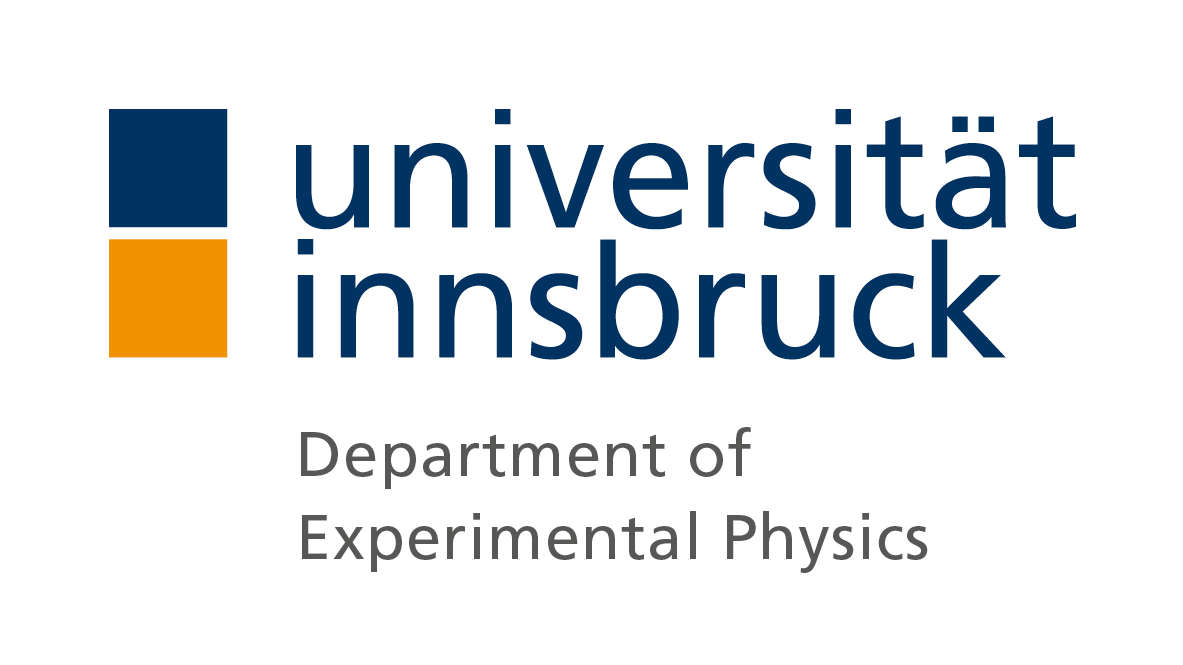Precision spectroscopy with entangled atoms
At a first glance, atomic clocks and quantum computers don't seem to have much in common. However, a closer look reveals many similarities. For both applications, ions held in electromagnetic traps are employed, the ions' quantum state being manipulated by lasers. In both cases, quantum superposition states play a key role, and information about the experiment is inferred from a quantum state measurement at the end of the experiment that project the ions' superposition state onto one of the basis states. Therefore, it is natural to investigate whether techniques that will become important for contructing future quantum computers might also have applications in atomic clock measurements.
The notion of quantum entanglement plays a key in quantum information processing. Recently it has also found a number of applications in spectroscopy: For precision spectroscopy, maximally entangled atomic GHZ states are of interest as their use can increase the signal-to-noise ratio under certain conditions when compared to experiments performed with single atoms. This property has been recently experimentally demonstrated by D. Wineland's ion trapping group in Boulder, USA. A second application of quantum logic was demonstrated by the same group in another experiment for reading out the quantum state of an Al+-ion. In that experiment, the quantum state of the Al+-ion serving as clock was transferred to another ion species that was easier to measure. Our current experiment employs quantum logic in yet another way by making use of the long lifetime of certain entangled atomic states for performing precision measurements.
Decoherence-free subspaces
Interactions of a quantum system with its environment usually lead to a fast collaps of quantum superposition states. Contructing a quantum computer therefore requires quantum systems interacting only weakly with their environment. In addition, the quantum states will have to be protected against decoherence by quantum error correction. However, in many quantum systems there are quantum states showing a much weaker coupling to the environment than most other states. These states span a so-called decoherence-free subspace and are robust against external disturbances. This property makes such states interesting for precision spectroscopy as the measurement accuracy is directly linked to the lifetime of the states.
Experiments with entangled ions
In our experiments, we use electromagnetically trapped calcium ions (40Ca+). For encoding quantum information, we create superpositions of the the electronic ground state |S> and a long-lived excited state |D> (lifetime ~1s). The ions are shielded from external perturbations in a vacuum vessel and the quantum information is encoded into the ions and processed with laser pulses. The ion's internal states are read out by collecting fluorescence light with a highly sensitive ccd camera that has sufficient spatial resolution to distinguish between individual ions. By a sequence of laser pulses, the quantum-mechanically entangled Bell states y± = |S>|D>± |D>|S> and f± = |S>|S>±|D>|D> are created. The f± states decay rapidly as fluctuations of the magnetic field give rise to random fluctuations of the relative phase of the superposition state. This is not the case for the states y± that are immune against decoherence acting simultaneously on both ions. For this reason, the symmetric states y± can have lifetimes essentially limited only by spontaneous decay of the metastable D state. If the energies of both states constituting the superposition are not equal, the relative phase of the state will evolve as a function of time. Information about the energy splitting can be inferred by measuring the phase evolution rate. We have used this measurement technique for characterizing a certain type of energy shift that is of importance for atomic clock measurements.
Electric quadrupole moment
Atomic clocks rely on the fact that the energy difference between two atomic levels is the same for all atoms of the same kind in the absence of external fields. A measurement of the corresponding atomic oscillation frequency is then used for measuring time. However, electro-magnetic fields are able to slightly shift the atomic energies and thereby to introduce errors in clock measurements. For atoms having a single valence electron, an important effect is caused by electric field gradients interacting with the electric quadrupole moment of the metastable state, leading to shifts of the transition frequency on the order of 10-14. The electric quadrupole moment was measured for a number of isotopes by studying the influence of the field gradient on the transition frequency. Such measurements requires lasers of extreme spectral purity and the absence of other energy shift masking the quadrupole shift.
Measurement of the quadrupole moment with two entangled atoms
In our experiment with 40Ca+-ions, the leading energy shift is caused by magnetic fields that shift all energy levels by an amount 100000 bigger that shift caused by the quadrupole moment. Fluctuating magnetic fields would make measurements with a single atom impossible. By using a pair of entangled atoms, we have been able to create quantum states that are insensitive against these magnetic field fluctuations but sensitive to the quadrupole shift. Measuring the relative phase of the state versus time, we have succeeded in measuring the value of the electric quadrupole moment of the D5/2-state in calcium with a precision surpassing all previous measurements of quadrupole moments by nearly an order of magnitude. This technique of preparing a 'super-atom' quantum state consisting of two entangled atoms having the desired properties with respect to external field will be used in future experiments for a measurement of the transition frequency between the ground state |S> and the metastable |D> state of 40Ca+.
Literature
"'Designer atoms' for quantum metrology", C. F. Roos, M. Chwalla, K. Kim, M. Riebe, R. Blatt, Nature 443, 316-319 (2006) pdf
Downloads
Financial support
We are financially supported by Österreichische Akademie der Wissenschaften, Universität Innsbruck, Fonds zur Förderung der wissenschaftlichen Forschung (FWF) within the program "Control and Measurement of Coherent Quantum Systems", the European networks "SCALA", "CONQUEST", as well as IQI and ARO.

